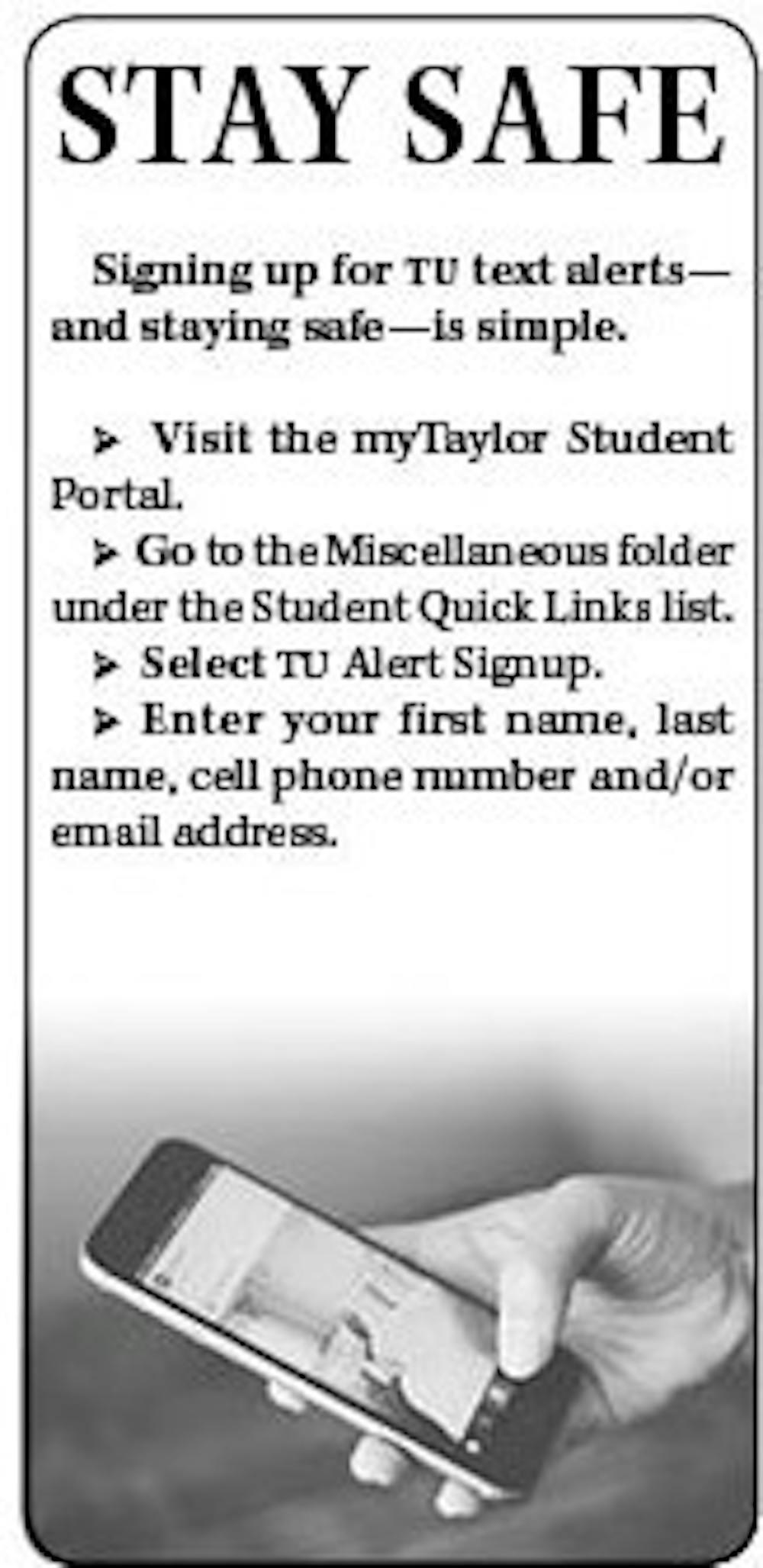By Anna Oelerich | Echo
Imagine it's your first day back at Taylor, and you end up spending much of it in the basement. That's what happened to many students and staff on Wednesday afternoon when a storm that spawned a lethal tornado in Kokomo headed toward the Taylor campus. The storm, which had wind speeds up to 165 miles per hour, compelled everyone to take shelter as sirens blared and clouds formed overhead.
Junior Clara Loisch was in the basement of her Kokomo home as the storm passed over her house, leaving little damage outdoors. Meanwhile, her sister Emma took cover on Kokomo's Ivy Tech campus. "(The tornado) actually passed right by the building and blew in windows, smashed cars and tore off part of the roof," said Clara Loisch. "Thankfully, no one was hurt."
Other structures in Kokomo were unable to withstand the vortex. A flattened Starbucks, surrounded by untouched structures, was one of the first images students saw online. Fortunately, reports of damage to area apartments, barns and homes did not include deaths or major injuries.
Back in Upland, Taylor students and staff were told to remain below ground, as weather reports announced one tornado warning after another. Students who had previously signed up for TUAlert received texts informing them of the tornado's path; others relied on online weather reports and texts from concerned parents.
While mainstream media outlets can bring peace of mind to those seeking shelter, Campus Police Chief Jeff Wallace and his team encourage students to rely primarily on the TUAlert system. "We're given reports that are often more specific to the campus, in addition to national alerts," Wallace said.
Once they were notified of Wednesday's severe weather, Campus Police began contacting faculty, staff and student leaders who are part of a tornado policy phone tree. From there, Campus Police risked their own safety to check every building to make sure people had taken cover. They even checked athletic fields and outdoor areas for anyone without access to weather updates.
Text alerts are meant to be a student's main outlet for severe weather updates, but if the alerts aren't frequent or specific enough, even experienced students can get confused as to the threat level. "We want to be able to notify the entire campus (of future severe storms), sending out a community alert when it happens and when it ends," Wallace said. This will help curb misunderstandings about when students and faculty are able to return to their activities.





